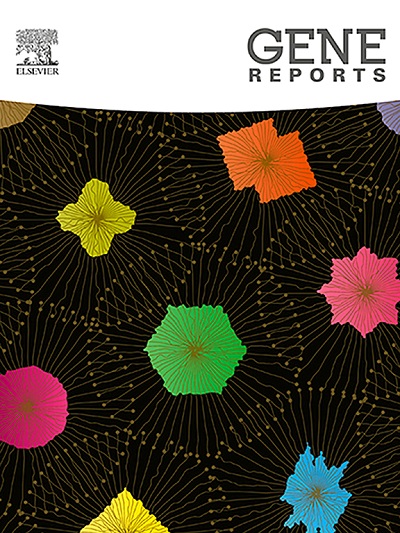Comparison of vitrification techniques for the formation of the first skin biobank of lesser grison (Galictis cuja Molina, 1782): Insights into species genetic conservation
IF 1
Q4 GENETICS & HEREDITY
引用次数: 0
Abstract
Background
Although skin vitrification is a tool used to create biobanks for wildlife, its appropriate use can vary in a species-specific manner. Since there are no studies on the conservation of lesser grison skin.
Objective
We proposed to assess two vitrification techniques on the in vitro dynamics of cells recovered from cryopreserved skin.
Methods
Skin (9.0 mm3) was cryopreserved using solid-surface vitrification [SSV group] and direct vitrification in cryovials [DVC group]. Non-cryopreserved skin fragments were used as a control (control group). All fragments were assessed for morphology, viability, degree of apoptosis, population doubling time (PDT), metabolism, reactive oxygen species (ROS) levels, and mitochondrial potential (ΔΨm).
Results
No differences were observed between the groups regarding morphology and metabolism. However, only the cells from the DVC group exhibited viability and PDT rates similar to the control group (p < 0.05). Both vitrification techniques, DVC and SSV, resulted in significant changes in apoptosis, ROS levels, and ΔΨm compared to the control group (p < 0.05).
Conclusion
Although both vitrification techniques promote the recovery of lesser grison somatic cells, DVC maintained a more significant number of cell quality parameters than SSV. These results are the first steps toward forming biobanks of genetic resources in this species.

玻璃化技术形成第一个小灰鼠皮肤生物库的比较(Galictis cuja Molina, 1782):物种遗传保护的见解
虽然皮肤玻璃化是一种用于创建野生动物生物库的工具,但其适当的使用方式可能因物种而异。由于目前还没有关于小灰鼠皮肤保护的研究。目的探讨两种玻璃化技术对冷冻皮肤细胞体外动力学的影响。方法采用固体表面玻璃化法(SSV组)和低温瓶直接玻璃化法(DVC组)冷冻保存皮肤(9.0 mm3)。非冷冻保存的皮肤碎片作为对照(对照组)。评估所有片段的形态、活力、凋亡程度、群体倍增时间(PDT)、代谢、活性氧(ROS)水平和线粒体电位(ΔΨm)。结果两组间在形态学和代谢方面均无差异。然而,只有来自DVC组的细胞表现出与对照组相似的活力和PDT率(p <;0.05)。与对照组相比,DVC和SSV两种玻璃化技术均导致细胞凋亡、ROS水平和ΔΨm发生显著变化(p <;0.05)。结论虽然两种玻璃化技术都能促进小颗粒体细胞的恢复,但DVC比SSV保留了更多的细胞质量参数。这些结果是在该物种中形成遗传资源生物库的第一步。
本文章由计算机程序翻译,如有差异,请以英文原文为准。
求助全文
约1分钟内获得全文
求助全文
来源期刊

Gene Reports
Biochemistry, Genetics and Molecular Biology-Genetics
CiteScore
3.30
自引率
7.70%
发文量
246
审稿时长
49 days
期刊介绍:
Gene Reports publishes papers that focus on the regulation, expression, function and evolution of genes in all biological contexts, including all prokaryotic and eukaryotic organisms, as well as viruses. Gene Reports strives to be a very diverse journal and topics in all fields will be considered for publication. Although not limited to the following, some general topics include: DNA Organization, Replication & Evolution -Focus on genomic DNA (chromosomal organization, comparative genomics, DNA replication, DNA repair, mobile DNA, mitochondrial DNA, chloroplast DNA). Expression & Function - Focus on functional RNAs (microRNAs, tRNAs, rRNAs, mRNA splicing, alternative polyadenylation) Regulation - Focus on processes that mediate gene-read out (epigenetics, chromatin, histone code, transcription, translation, protein degradation). Cell Signaling - Focus on mechanisms that control information flow into the nucleus to control gene expression (kinase and phosphatase pathways controlled by extra-cellular ligands, Wnt, Notch, TGFbeta/BMPs, FGFs, IGFs etc.) Profiling of gene expression and genetic variation - Focus on high throughput approaches (e.g., DeepSeq, ChIP-Seq, Affymetrix microarrays, proteomics) that define gene regulatory circuitry, molecular pathways and protein/protein networks. Genetics - Focus on development in model organisms (e.g., mouse, frog, fruit fly, worm), human genetic variation, population genetics, as well as agricultural and veterinary genetics. Molecular Pathology & Regenerative Medicine - Focus on the deregulation of molecular processes in human diseases and mechanisms supporting regeneration of tissues through pluripotent or multipotent stem cells.
 求助内容:
求助内容: 应助结果提醒方式:
应助结果提醒方式:


